The Complete Guide of Kutani Ware and 6 Popular Potters
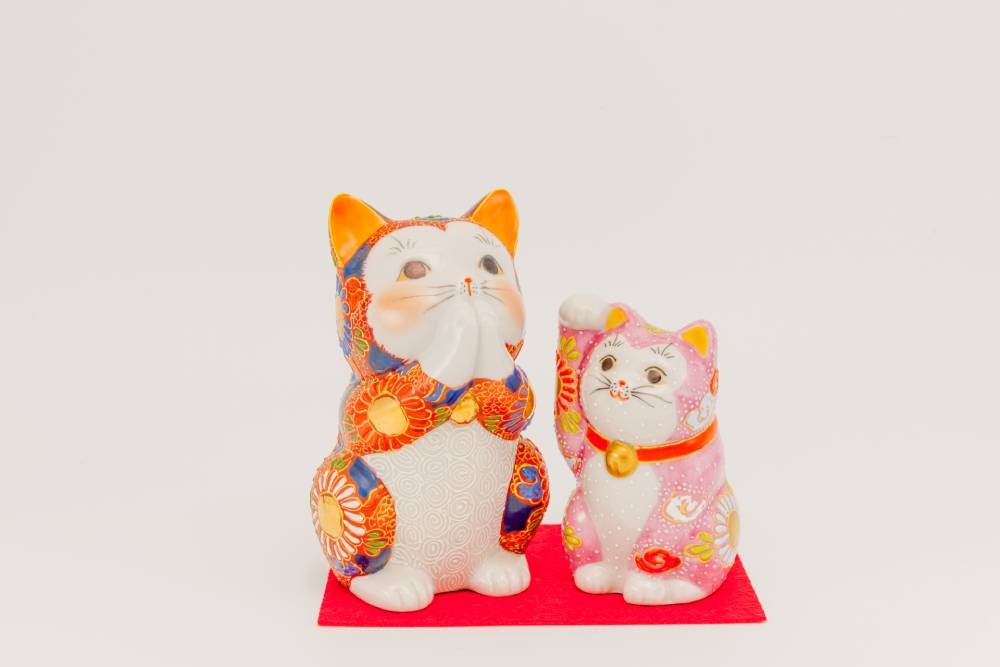
Kutani ware is a type of colored ceramics that has a history of 360 years. Many fans and researchers are interested in the mysterious history. Let’s quickly learn about Kutani ware. I will also introduce 6 of the popular potters to help you find your favorite!
What is Kutani Ware?
Kutani ware is colored-painted ceramics produced in Kanazawa, Komatsu, Kaga, and Nomi cities in Ishikawa Prefecture. It has a history of 360 years and is popular both in Japan and abroad as a traditional craft.
The Characteristics of Kutani Ware
The most attractive feature of Kutani ware is overglazed decoration. The overglazed decoration is a technique in which a pattern is painted with pigments on the glaze of ceramics that have been fired and then fired again. The elegant colors of Kutani ware have been passed down to the present day, with a focus on the five colors-red, green, yellow, purple, and navy blue.
History of Kutani Ware
Kutani ware was born in the early Edo period (1603-1868). During the development of the mine, ceramic stones were discovered in Kutani Village. Saijiro Goto, a samurai who had mastered the technique of porcelain making led to the production of porcelain. The name “Kutani-ware” was derived from the fact that a kiln was built in Kutani Village, which had become a production center.
However, the production of Kutani ware suddenly ended after only half a century. There are some possible reasons for this, such as a lack of funds for the kilns and a change in policy triggered by the replacement of the clan leader. But there is no clear record of this, and it remains a mystery to this day. The ceramics produced during this brief period are called “Ko-Kutani (古九谷)”.
About 100 years after Ko-Kutani, ceramic production was resumed to prevent gold and silver from flowing out of the area and to restore the Ko-Kutani kilns. They invited a craftsman from Kyoto to build a kiln in Kanazawa City to provide technical guidance. This led to the establishment of kilns throughout Kaga. The Kutani ware born at the end of the Edo period (1603-1868) is called “Saiko Kutani (再興九谷)”.
After the Meiji Restoration, the potters were in a difficult situation as they could no longer obtain support from the feudal clans. As a result, the artisans at the kilns refined the artistic value of their works. The artisans also found a way into the export industry, producing many pieces for the Western market. “Kutani Shoza (九谷庄三)”, famous for his precise color painting in red and gold, was also made around this time.
In this way, Kutani-yaki established itself as a traditional art craft. After the late Showa period (1926-1989), it began to be produced as fine art, incorporating elements of modern art. Today, a variety of designs are being produced to suit the times and lifestyles.
Painting Styles
Aote 青手
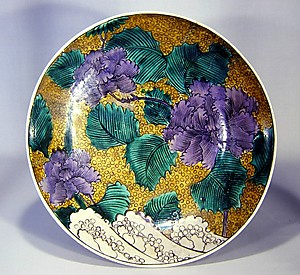
source: Kutaniyaki Art Museum
Aote is a style of painting in which green pigments are used to create a striking color scheme. Another characteristic of Aote is the use of vividly colored paint over the entire surface of the ceramic, leaving almost no white space.
Iroe/Gosaite 色絵/五彩手
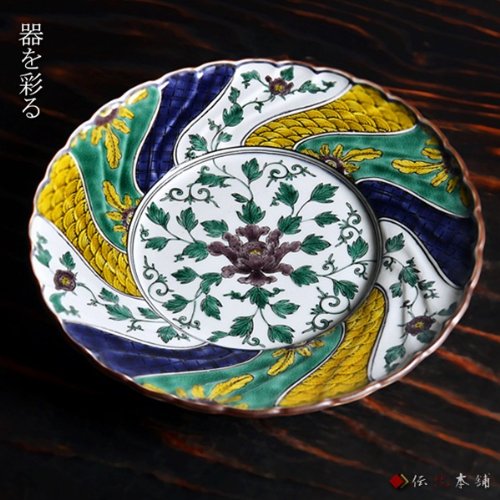
source: Temae Itamae
It is called “Iroe” or “Gosaite”. This style of painting uses green, yellow, purple, navy blue, and red-colored paints that are called “Kutani Gosai (九谷五彩)”.
Akae/Kinrande 赤絵/金襴手
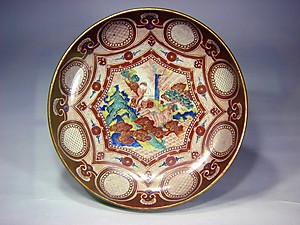
source: Kutaniyaki Art Museum
This style utilizes the characteristics of red colored paints, which do not bleed easily, to create a thin line. The style painted in red and gold is called “Kinrande”.
Important People
Ginshu Takeuchi 竹内吟秋 (1913-1831)
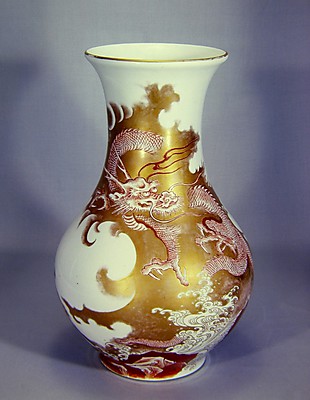
source: Kutaniyaki Art Museum
He was strongly influenced by Chinese-style designs and developed a brilliant color painting technique that uses red and gold paint with fine brushwork. He also established a private school at his own expense and taught ceramic painting.
Ichigo Asai 浅井一毫 (1916-1836)
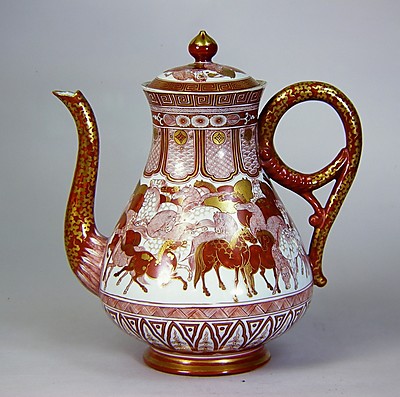
source: Kutaniyaki Art Museum
He took Kutaniyaki in a new direction by incorporating the Wazen Kinrande (gold-colored ceramics) technique into Miyamoto Kiln’s red enamel fine-painting technique.
Seika Suda 須田菁華 (1862-1927)
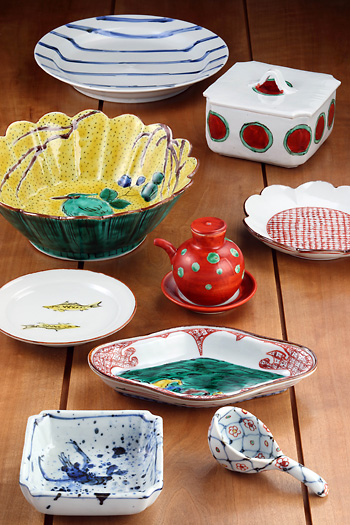
source: WAKO
He excelled at making imitations of Ko-Kutani.
Father and son: Tojiro Kitade (1898-1968) and Fujio (1919-2014) 北出塔次郎/不二雄
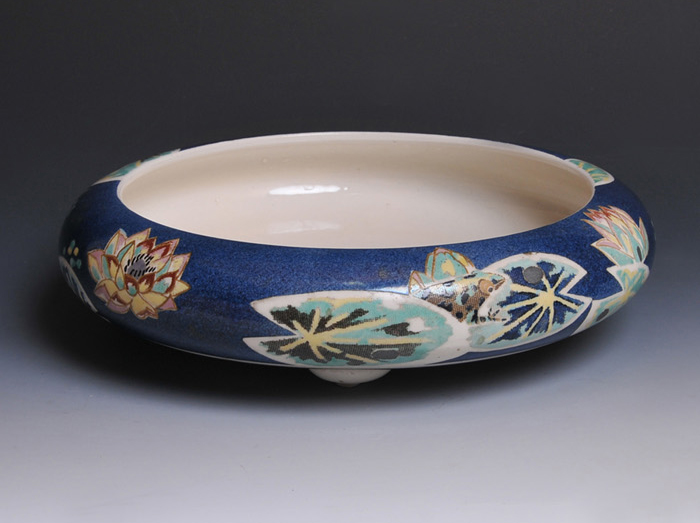
source: Kobijutsu Sasaki
Based on the traditional technique of color painting, they established their own style by incorporating exotic Middle Eastern designs and carved decorations.
Yasokichi Tokuda 徳田八十吉 (1933-2009)
Japan’s Living National Treasures. He created a technique called “saiyu (彩釉),” which uses about 70 different colors to create a ceramic using only gradations.
Minori Yoshida 吉田美統 (Born in 1932)
Japan’s Living National Treasures. He created the technique called “Yuri Kinsai (釉裏金彩)”, which uses thin and thick gold leaves to create perspective.
Popular Potters
Seikogama 青郊窯
この投稿をInstagramで見る
They invented a printing technique using transfer sheets. The vivid colors and hand-painted expressiveness unique to Kutani ware have been preserved, but they are able to produce stable, high-quality Kutani ware.
They also developed the paints used for Kutani ware. Lead-free Japanese paints they developed can express smooth textures while maintaining the painting style of Kutani ware. The absence of lead also allowed designs to be applied to the inside of ceramics, greatly expanding the tableware design.
Available Store
30 Minami, Izumidai-cho, Nomi, Ishikawa
Hours: 9:00 am – 6:00 pm (10:00 am – 5:00 pm on Saturdays and Sundays)
Closed: Monday
https://www.toulife.jp/
Kutani Kosengama 九谷光仙窯
この投稿をInstagramで見る
It was established in 1870. In 1926, it won the Grand Prize at the World’s Fair commemorating the 150th anniversary of American Independence. It also won the Grand Prix at the World’s Fair in Liege, Belgium. Moreover, they have presented matcha bowls to the imperial family. It is successful both in Japan and abroad.
5-3-3 Nomachi, Kanazawa City, Ishikawa Prefecture
Hours: 9:00 am – 5:00 pm
Closed: New Year’s Day
https://kutanikosen.com/en/index.html
Suda Seika 須田菁華
この投稿をInstagramで見る
It was established in 1891 by Seika Suda, whom I have just introduced. It continues to preserve the traditional methods of Kutani ware pottery.
Company Store
4 Higashiyama-cho, Yamashiroonsen, Kaga City, Ishikawa Prefecture
Hours: 9:00 am – 5:00 pm
Closed: irregular
Kamidechoemongama 上出長右衛門窯
この投稿をInstagramで見る
A 130-year-old kiln was established in 1879. It insists on hand-painting and mainly produces and sells arts crafts and daily tableware.
Showroom
f65, Yoshimitsu-cho, Nomi, Ishikawa, Japan
Hours: 10:00 am – 5:00 pm
Closed: Saturdays, Sundays, and national holidays
(There are some irregularities.)
Please contact them in advance of your visit from here.
http://www.choemon.com/
Ginshugama 銀舟窯
この投稿をInstagramで見る
They have created a new worldview of “Kawaii Kutani ware”. The light colors and detailed painting are very popular.
Available Store
30 Minami, Izumidai-cho, Nomi, Ishikawa
Hours: 9:00 am – 6:00 pm (10:00 am – 5:00 pm on Saturdays and Sundays)
Closed: Monday
https://www.toulife.jp/
Bizangama 美山窯
この投稿をInstagramで見る
Established as a Kutani painting kiln in the late Meiji period (1868-1912). They are challenging new possibilities for Kutaniyaki, such as copying Hokusai and Van Gogh.
Available Store
30 Minami, Izumidai-cho, Nomi, Ishikawa
Hours: 9:00 am – 6:00 pm (10:00 am – 5:00 pm on Saturdays and Sundays)
Closed: Monday
https://www.toulife.jp/
Iroekutani Yu 色絵九谷 遊
この投稿をInstagramで見る
They are a Kutani ware painting studio operated by female artisans.
They work hard every day to bring smiles to everyone who uses their ceramics by bringing the gentleness and cuteness to their work.
Company Store
51-6, Nu, Tsukibashi-cho, Hakusan, Ishikawa, Japan
Hours: 9:00 am – 6:00 pm
Closed: Sundays & Holidays
https://www.iroeyu.com/
Kutani Ware Shipping Overseas
Amazon.co.jp offers a lot of Kutani ware. They also ship outside of Japan, and you can shop in English.
 Comment
Comment

 Home
Home 05/27/2022
05/27/2022




